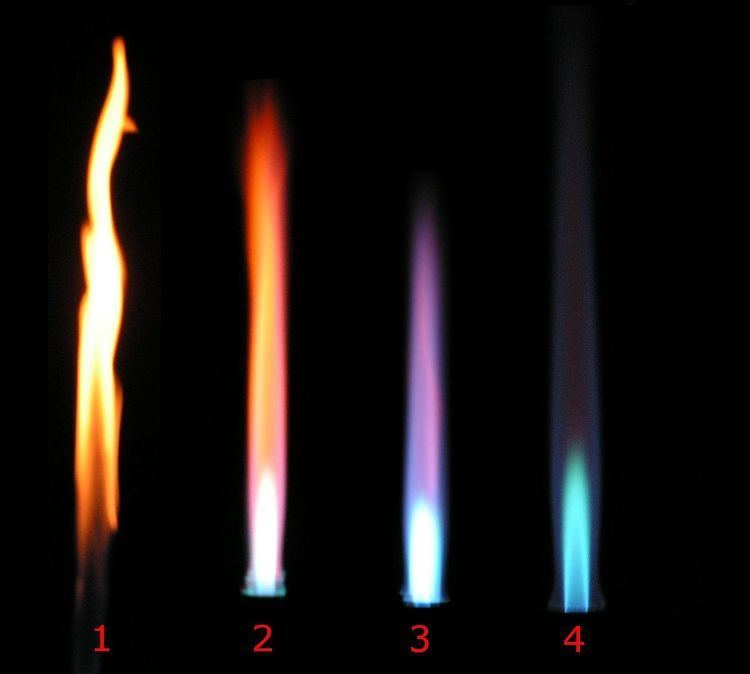 | ||
In various burners, the oxidizing flame is the flame produced with an excessive amount of oxygen. When the amount of oxygen increases, the flame shortens, its color darkens, and it hisses and roars. With some exceptions (e.g., platinum soldering in jewelry), the oxidizing flame is usually undesirable for welding and soldering, since, as its name suggests, it oxidizes the metal's surface. The same principle is important in firing pottery — see Reducing atmosphere.
The reducing flame is the flame with low oxygen. It has a yellow or yellowish color due to carbon or hydrocarbons which bind with (or reduce) the oxygen contained in the materials processed with the flame. The reducing flame is also called the carburizing flame, since it tends to introduce carbon into the molten metal.
The neutral flame is the flame in which the amount of oxygen is precisely enough for burning, and neither oxidation nor reduction occurs. A flame with a good balance of oxygen is clear blue.
The reducing and neutral flames are useful in soldering and annealing.
